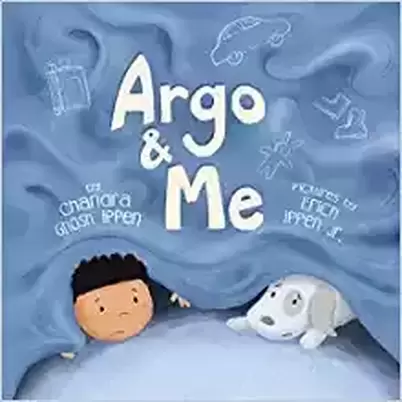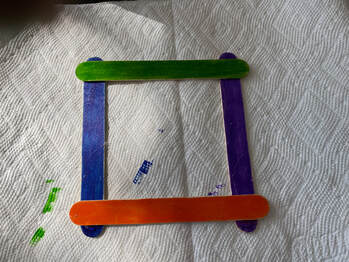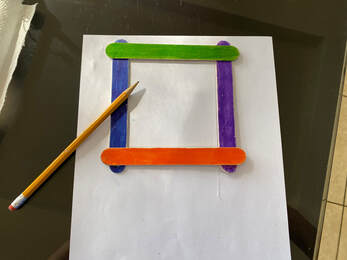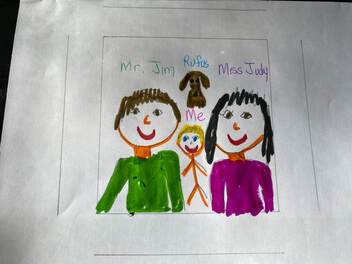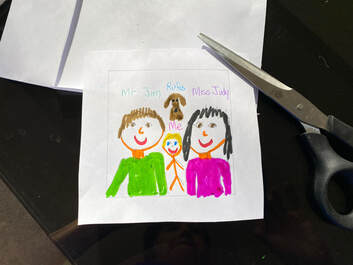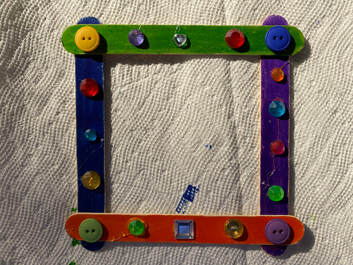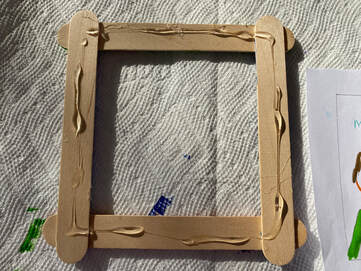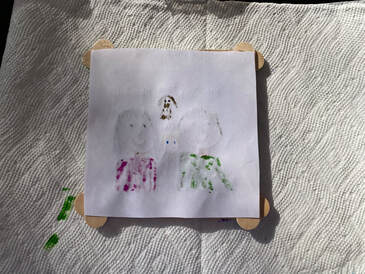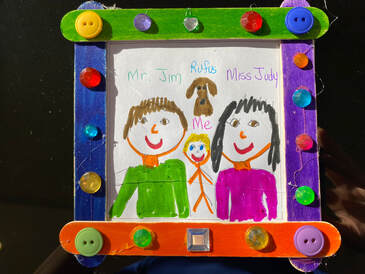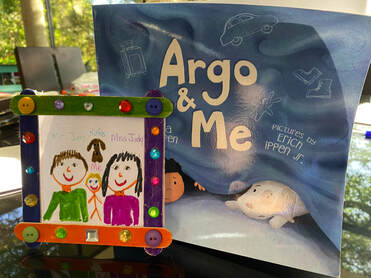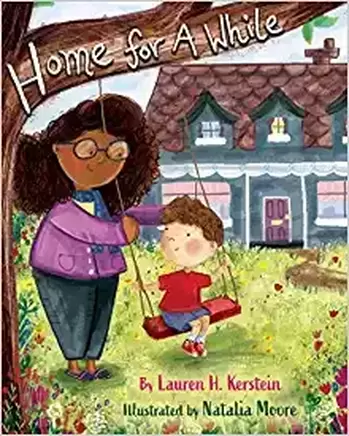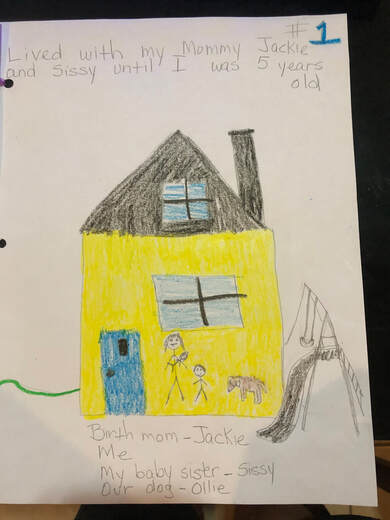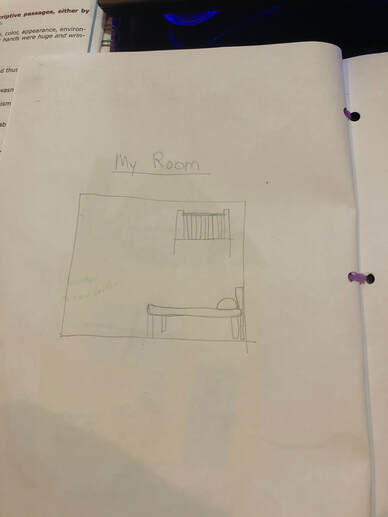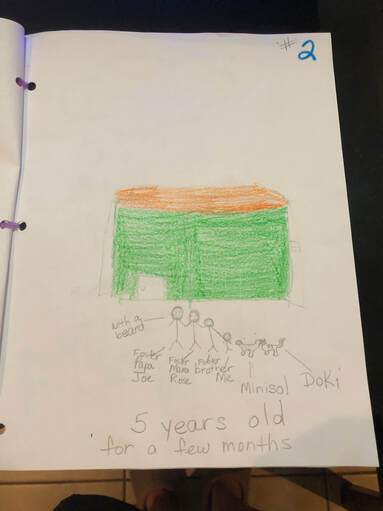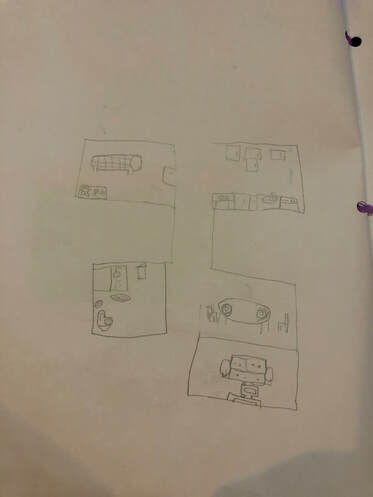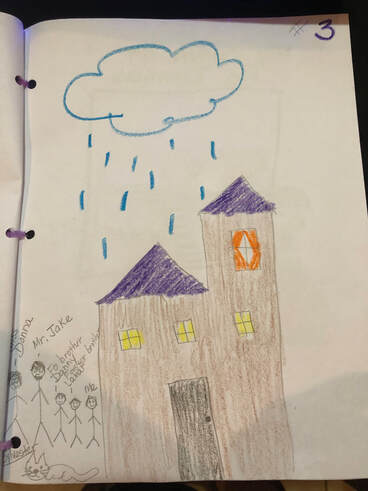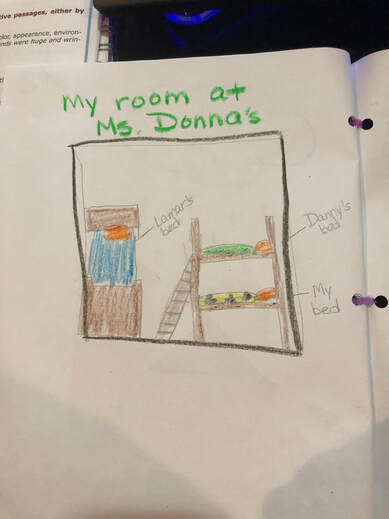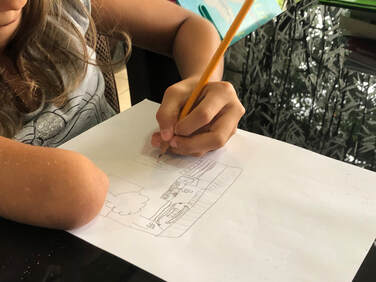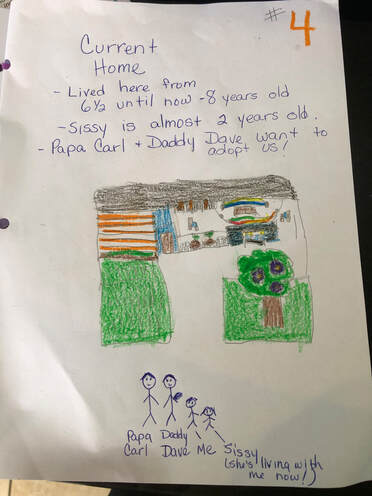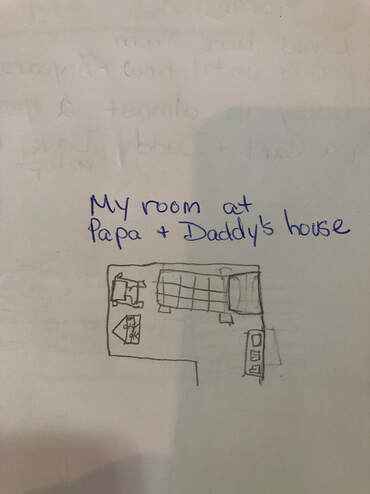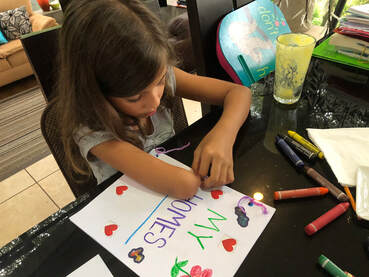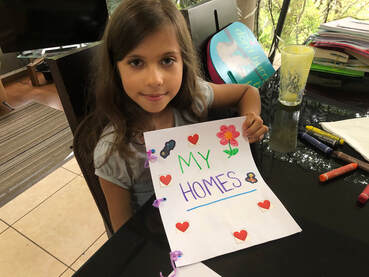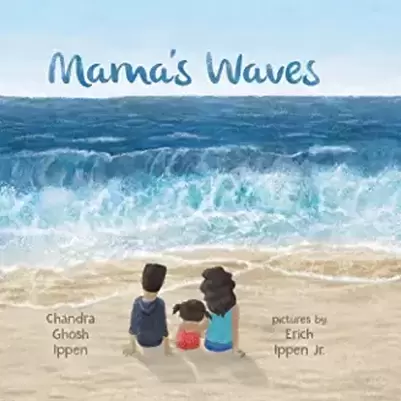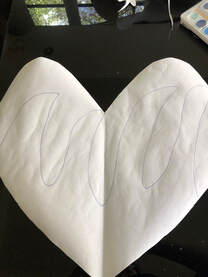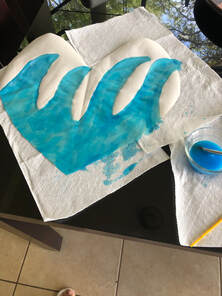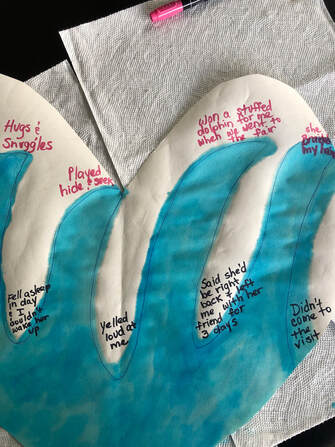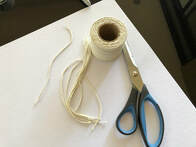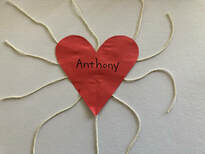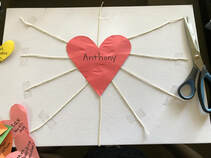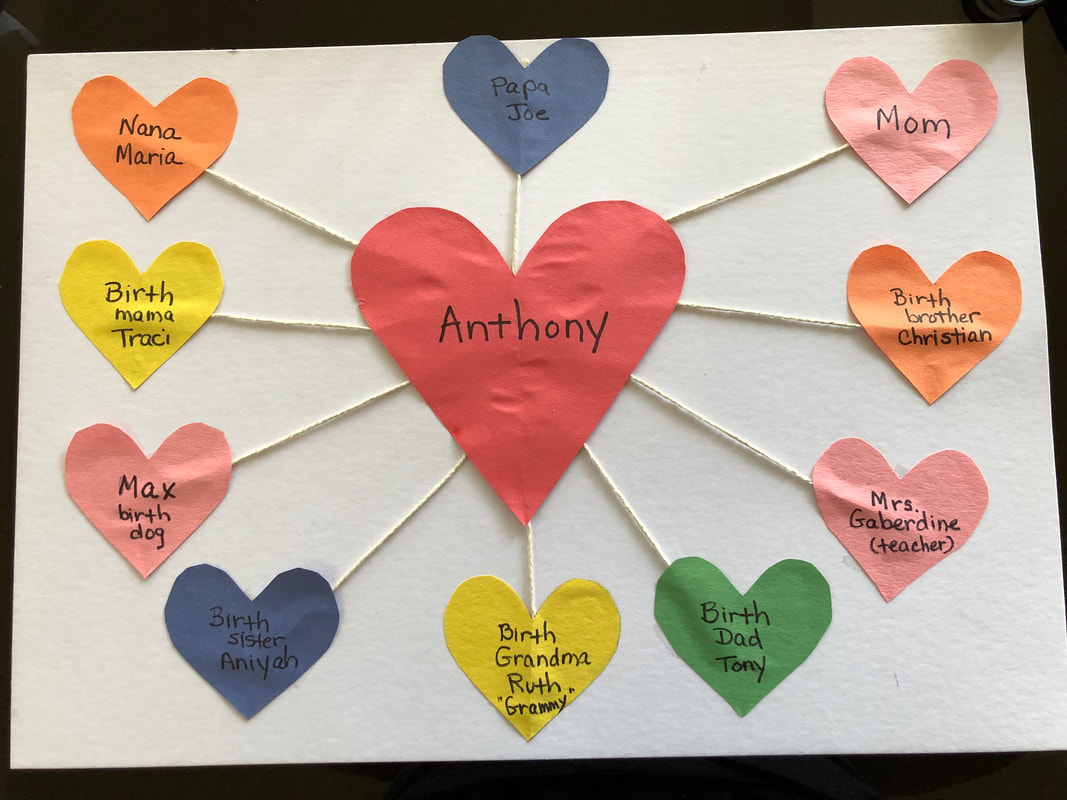A Book Review of Argo & Me
Chandra Ghosh Ippen, the author, expertly provides emotional distance of these heavy topics by focusing on the experience of caring for a rescue dog. This makes the story more palatable for the young child. She gently weaves the shared experience of the boy into the story, as follows. "People I lived with before had big problems and didn't always take good care of me." The illustrations, in gray, faded colors, show the reader some of the negative experiences of the boy. This brings the reader to not only feel compassion for the dog, but for the boy also. This book serves as an excellent model for compassion and understanding when dealing with a child or a dog, with a history of traumatic experiences. Child and adult readers alike, will feel their heart plunge into deep empathy when reading this book. Ms. Ippen stresses the importance of gentleness, observation, listening skills and taking time and patience to earn the trust of someone with past hurts. "People had not always been kind. Some people had hurt him, and Argo didn't know that we were different." Zeze and Paul, the animal shelter staff, represent kind foster parents of Argo. In dealing with Argo's intense fear, they get down at his level and gently wait while playing soft music. This eventually lures Argo to start to trust and move toward them on his own. What great modeling of empathic caregivers! Argo & Me provides examples of many fears, more common ones like thunderstorms, and unique ones based on personal experiences, like boots, or in the boy's case, suitcases. Suitcases reminded the boy of the sad goodbyes and signified to him another move. But with time and repeated positive experiences, the boy learned that suitcases were for fun trips! This illustrates the hopefulness of being able to change and put some fears to rest when in a positive environment. Later in the story, the boy becomes angry with Argo for chewing on his stuffed animal. Argo reacts with fear and sadness. The family notices that bad moods may remind Argo of bad days in his past. The boy was able to return to Argo later and repair the situation. This scene is significant in two ways. One is the crucial concept that anger does not have to mean loss of love or connection. This is part of learning to feel safe in a secure environment. The second point is that there is meaning behind acting out behavior. Reacting with anger is normal, although taking a deep breath and working on understanding the meaning behind it, is a kinder, more effective way to handle these situations. Another topic that the book addresses that I value deeply, is keeping past positive relationships as much as possible in the lives of these children. The family ran into Zeze and Paul at the dog park. Argo enjoyed sharing memories with his past family in the company of his current family. Setting up these visits can help the child feel whole by combining parts of their past lives with the present. It can also model positive loss, as shown in the following quote: "Even when they're not with us, they live in our hearts." If you pay close attention, you can surmise that the boy was adopted by a single dad. This is a great message of the possibilities of finding love in non-traditional families. The framed photos on the last spread of the book, displaying the boy's new life with past connections, ends the story on a beautiful note. This leaves the reader with feelings of hopefulness that, even if you had a rough start on life, you can find love and connection in your future. The illustrations, by Erich Ippin Jr., reflect the messages and moods of the story. The soft shades of blue add to the feelings of gentleness and compassion. The sad moments are colored in gray and dull hues, while the happy moments are reflected in bright shades. The illustrations are fun and will appeal to young children. To purchase this book or check out other books from this author, click HERE. An Activity Idea for Argo & MeMaterials: -Large Craft Sticks -Strong glue -white paper or cardstock -Markers -Pencil -Decorating options (jewels, glitter glue, buttons, small stickers, etc.)
2 Comments
A Book Review of Home For A While
In 2020, there were approximately 424,000 children in foster care in the United States. This number has been increasing in recent years. This increase is, in part, due to the opioid addiction crisis that has accelerated over the past many years. Based on these numbers, the likelihood of a child having a peer in this situation in their classroom or neighborhood, is quite high. Therefore, this book is appropriate for all children to either see their own experience or as a window into an experience of a peer. It is a great resource for foster/adoptive parents and teachers as it normalizes behaviors and provides much insight into feelings and coping strategies that they can incorporate into their own families and classrooms. Unfortunately, it is common for a child to have to move to several foster homes before finding the right fit, being adopted, or being returned to their birth family. There are many reasons for this. It could be a change in circumstances of the foster family, ie. illness, out-of-state move, etc. Sometimes it is the severe behaviors of the child presenting challenges that the foster family is not equipped to handle. It could also be the foster care agency realizing that this family is a poor fit for this child or that this home is not a safe place. These moves are often abrupt, not giving the child time to process the change. Each move eats away at the child's self-esteem and sense of worth, making them feel unwanted and unlovable, therefore likely increasing their behavioral outbursts. In Home For A While, Calvin is a foster child who has had many moves. The author, Lauren Kerstein, doesn't shy away from the difficult emotions or negative self-talk that so many kids in this circumstance experience. "This isn't your home," or "Nobody wants you," is the narrative or self-talk going through Calvin's head in the story. He understandably has difficulty trusting Maggie, the foster mom, when she tries to reassure him. He has heard those lines before and it didn't ring true. He has learned from experience that adults cannot be trusted. Why should I trust her? I wasn't able to trust anyone else in my life. Maggie respectfully asks Calvin if she can hug him goodnight persistently and he persistently refuses. He has built a wall around himself to avoid getting hurt again. He has learned from the past how painful it is to let someone in your heart, only for them to break it again. So, he keeps his heart safe. And, why would anyone want to hug him anyway? He's not huggable. He's not loveable. That is what his short life has already taught him. He will have to unlearn this and develop much courage in order to let others enter his heart again. The author, Ms. Kerstein, portrays Calvin experiencing a host of feelings in this story, including fear, sadness, anger, anxiety, grief, etc. When he acts out on these feelings, he waits in fear and anxiety to see what Maggie's reaction will be. Living in many homes, you learn that everyone reacts and disciplines differently and you don't know what to expect in a new home. Most often you imagine the worst. Luckily this time, Maggie is an insightful and patient foster mom, and responds by modeling and suggesting various coping mechanisms to help him work through his feelings. Through Maggie, Ms. Kerstein presents many coping mechanisms to help regulate big feelings. These include deep breathing, manipulating clay, bouncing a basketball and going for a walk. All of these strategies have a sensory component that is helpful with regulating emotion. A phrase repeated by Maggie often in the book is "Like no one I've ever met." The message she conveys to Calvin through this phrase is "You are special." He doesn't feel special. He has learned the opposite about himself through all of his placements. But, Maggie is reinforcing this concept. Over time, when Calvin learns that Maggie consistently is loving, encouraging and seems to like him, he begins to trust her. When this happens his self-talk changes to "Maggie wants me," and "I like this house." This process takes a great deal of time and requires much consistency and patience on the part of the foster parent. When Calvin finally begins to trust, and let her into his heart, he can begin to heal from his multiple losses. The illustrations by Natalia Moore with the bright colors and beautiful details complement the story. She does a great job portraying Calvin's intense feelings through facial expressions and action. Ms. Kerstein provides an informative reader's note, that is not included in the book, but is on the Magination press website here. I highly recommend this book for foster/adoptive kids and their caretakers, therapists, teachers, and to be read to kids in general, to provide insight and empathy to all who read it. To purchase this book and others by this author, please visit her website here! She provides printable activities to go along with her book here. We will be having a special guest interview with Lauren Kerstein, the author of this book, on the blog at the end of the month! She will bring her expertise as an experienced social worker and author. Stay tuned! Activity Idea for Home For A While An activity I did often in my practice with foster/adoptive children, especially those that had multiple placements, was to make a book of their placements in chronological order, starting with their birth home. Kids are often moved abruptly and don't have the opportunity to process the loss before heading out for a new unwanted, scary adventure. This leaves the child without closure which further complicates their situation. This activity helps provide some closure and puts some sense of order in their otherwise disorderly lives. Sometimes kids will not remember placements if they were too young, etc. It can be helpful beforehand to get information about prior placements from a caseworker or another familiar adult, if possible. If you have received information from elsewhere that they don't remember, draw it for them with the information you have, discussing names and as many details as you can. It's important for them to have this information if you can obtain it. Otherwise, draw a basic house without the details and include anything that they remember. For younger kids, you can ask them to describe things and adult can draw it and have them color. Materials Needed: -paper -pencil -crayons -hole punch -yarn or thin ribbon -stickers (optional) -historical information about placements, if possible
A Book Review of Mama's Waves
These severe ups and downs that affect an adult's ability to parent their children are often caused by severe depression, bipolar disorder, other serious mental illness and/or substance abuse. Many of these difficulties may be due to the parent's own trauma experienced when they were a child. Ms. Ippen describes this well through a quote from Ellie's uncle about her mother, as follows: "When we were growing up, things were pretty stormy. Her boat got tossed around by waves until the waves became a part of her." I have worked extensively with children living in these situations. Through this experience, I have learned that there are very few, if any, parents in this situation that don't love and yearn for their children. However, in many circumstances the children are not safe with them, so they are often removed and placed in a safe environment. In these instances, it is crucial for the child to get the message that the parent is not a bad person, but a person with problems that needs help. It is equally crucial for them to know that their parent loves them and will always love them, whether they are living with them or not. But, that they are unable to care for them due to their problems. One of my favorite quotes from the book explains this beautifully: "Your mama's dealing with big waves, but we won't let those waves wash away her magic and love." It is important to encourage the child to talk about their parent and express their feelings. Ellie's uncle plays a crucial role in this discussion by remembering together the "stormy days" and the "smooth sailing" days. Positive memories are something that the child can treasure forever, so remembering them is very therapeutic. In the book, Ellie remembers the "rainbow cookies" that she made with her mom. This also can provide a hint for the caregiver on activities that they can continue that will promote positive memories and comfort within the child. In the story, the foster parent made contact with the uncle to visit the child, as her mother missed their scheduled visit. It is not always possible to meet with other family members, but when it is, it can preserve those important family connections. It is extremely comforting for the child to meet with an appropriate relative that likely may feel the same love, pain and worry that the child does toward their parent. Ellie and her uncle share mutual worry for Ellie's mother and share a hope that she will get help. Kids often worry about their parent when separated, especially if they played a caregiver role to that parent when they were living with them. The illustrator, Erich Ippen Jr., portrays strong emotions through the facial expressions of the characters. The colorful sprinkles and rainbows throughout the book give a feeling of hope for the future. There are few books available on this all-too-common topic of parental mental illness/substance abuse and separation of the child. This book was published recently and is one of the best ones I have read on the topic. I strongly recommend this book for therapists, case workers, family caregivers and foster parents to provide insight and comfort to young children in this difficult situation. It is a great book to spark conversation regarding the child's specific experience. I have provided an art activity below to help get this conversation started. If you are interested in this book or other books by this author, please visit her website here. Activity Idea for Mama's WavesMaterials Needed: Large piece of paper (I cut mine from a roll) Pencil Scissors Blue watercolor paint Paint brush-medium Dark color Markers
A Book Review of The Invisible String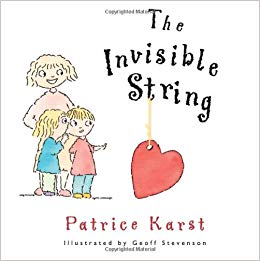 The Invisible String Written by: Patrice Karst Illustrated by: Geoff Stevenson Publisher: DoVorss & Co., CA Welcome to my first Blog post!! I thought Valentine's Day would be a perfect day to kick off my first post with this lovely book about connections of the heart. I am dedicating this post to my former Infant Mental Health team at Easter Seals Michigan. Due to the intensity of our work together, working with vulnerable young children and their families, we developed very strong connections to each other. This book became a frequent go-to for all of us in dealing with loss in young children. In my opinion, this book is most appropriate for children from three to eight years of age, but truly it resonates with people of all ages in providing comfort in the event of a loss. After all, loss is a universal experience that, like it or not, we all experience at one time or another and in one way or another. It is a painful experience that parents simply cannot protect their kids from, nor should they try. Liza and Jeremy were twins that became scared one night from a thunderstorm and ran out of their room and into their mother's arms. This situation is a frequent occurrence and common fear that many kids can relate to. Ms. Karst does a beautiful job showing appropriate expression of feelings of Liza and Jeremy throughout the book, as does Mr. Stevenson through the illustrations. This is a beautiful, comforting book that subtly touches on the many losses we incur in our lifetime. It presents the concept that we never really lose people we love, they stay in our hearts forever-always connected through that invisible string! Ms. Karst's creative concept of "the invisible string" is a magical concept that adds to the anticipation and mystery that draws kids into the book. At the end of the story, Liza and Jeremy are able to withstand the storm in their own beds comforted by their new knowledge that the people they love are always with them, even if not physically. I have used this book so much in my practice that I have worn it out! It is very useful with kids who have been separated from their families through foster care or adoption, jail, or death. I have found it helpful for military families when kids have a parent serving overseas. It is also useful for kids with separation anxiety and for just the day to day life happenings of a child, ie. staying in their own bed at night, starting preschool or Kindergarten, or missing their non-custodial parent who no longer lives with them. This story strongly resonates with children and adults alike and provides a comfort that only connection and relationships can provide when going through difficult times. I use this book as a great starting point to address all of the losses stated above. Many times, I follow the reading of this book by a therapeutic activity, to drive the concepts home.
|
| Directions 1. Cut out large heart from construction paper, in child's favorite color, and write child's name in the middle of the heart. Note: Work together with the child and parent, cutting if child is too young, having child pick out the colors and write name if they can. To make the hearts, I simply fold paper and make them the old fashioned way! Kids love the magic of opening up the shape after it's cut and seeing the heart! See photos. 2. Cut strings and tape on back of large heart. See photos. |
| 4. Have child pick out color for each of his/her connections and cut out smaller heart for each one. You can trace the first heart you cut so they are all about the same size. (Don't forget to let the kids do the "magic" by opening the heart!) Write the connection's name on heart using child's name for that person. |
| 6. FINISHED PROJECT! During and/or after activity, discuss favorite memories they have about each connection. Suggest to parent/guardian to hang project in the house somewhere where child can see it often. Drive home the message "Even though ______ isn't with you now, you are ALWAYS CONNECTED by the invisible string! You are in each other's hearts forever and no one can take that away from you." |
Follow me on twitter
Follow me on Twitter, Pinterest and LinkedIn
Categories
All
Absent Dad
Acceptance & Commitment -Therapy Skills
Acceptance Of Others
ADHD
Adoption
Anger Management
Anxiety
Body Autonomy
Cognitive Behavioral Therapy Skills
Consent
Coping With ADHD
Coping With Depression
Coping With Feelings
Depression
Disability Awareness
Disappointment
Divorce
Domestic Violence
Empathy
Fear
Feelings General
Feelings-General
Foster Care
Gender Identity
Giftedness
Grandparents As Guardians
Grief & Loss
Growth Mindset
Incarcerated Parent
Kindness
Kinship Care
Learning Disabilities
Making Friends
Mindfulness
Negative Self Talk
Parental Anger
Parental Arguing
Parent W/Mental Illness
Parent W/Substance Abuse
Racial Injustice
School Lockdown Drills
Seizures
Self Esteem
Sensory Issues
Separation Anxiety
Sexual Abuse
Sexual Abuse Prevention
Shyness
Standing Up For Others
Suicide
Supporting A Friend
Temper Tantrums
Terminal Illness
Trauma
White Privilege
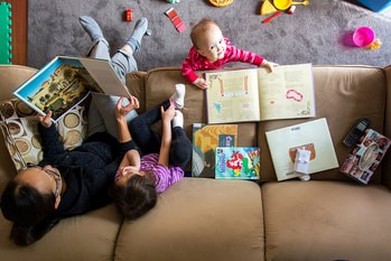
 RSS Feed
RSS Feed
